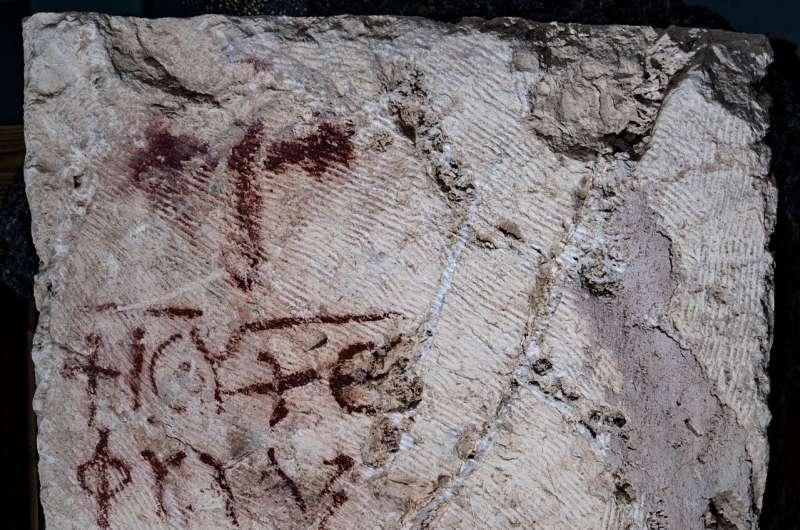Hebrew University of Jerusalem
Source - Unearthing ancient faith: Byzantine Greek inscription of Psalms 86 found in Hyrcania (phys.org)
 Inscription of Book of Psalms. Credit: Hebrew University of Jerusalem
Inscription of Book of Psalms. Credit: Hebrew University of Jerusalem
Archaeologists from The Hebrew University of Jerusalem's Institute of Archaeology recently carried out preliminary excavation at the ancient site of Hyrcania in the northern Judean Desert, coming at the heels of increased activity by antiquities looters.
Built upon an imposing, artificially leveled hilltop situated approximately 17 km southeast of Jerusalem and 8 km southwest of Qumran and the Dead Sea, this was one of a series of desert-fortresses first established by the Hasmonean dynasty in the late 2nd or early 1st century BCE—named in honor of John Hyrcanus—and later rebuilt and enlarged by Herod the Great. The most famous and luxurious of these strongholds are Masada and Herodium.
Shortly after the death of the latter in 4 BCE, Hyrcania lost its importance and was abandoned. It would then lie desolate for nearly half a millennium, until the establishment of a small Christian monastery among its ruins in 492 CE by the monk Holy Sabbas, an expression of the monastic movement that took shape in the Judean Desert with the rise of the Byzantine period.
Dubbed Kastellion, or "Little Castle" in Greek, the monastery remained active past the Islamic conquest of Byzantine Palestine around 635 CE but was apparently abandoned by the early 9th century. The site is known also by its Arabic moniker, Khirbet el-Mird, or "Ruins of the Fortress." Attempts were made in the 1930s to revive the monastery, but harassment by local Bedouin cut short the venture.
Although a few isolated investigations of the site had been sporadically undertaken in the past, no methodological, academic archaeological excavation had ever been conducted—until now. Complex access and logistics have long played a role. However, recently a team led by Hebrew University's Dr. Oren Gutfeld and Michal Haber spent four weeks at the site, uncovering key evidence of the site's remarkable history.
During this initial "pilot" season, efforts were primarily focused on two key areas. In the southeastern corner of the summit, a segment of the prominent upper fortification line was uncovered, a vital component of the Second Temple-period fortress dating back to approximately the late 2nd or 1st century BCE.
This discovery prompted Dr. Oren Gutfeld to observe, "There are certain architectural elements within these fortifications that strongly recall those of Herodium, all part of Herod's extraordinary vision. It's quite possible that the construction was even overseen by the same engineers and planners. It's not by chance that we call Hyrcania "Herodium's little sister.'"
In the northeast, the team peeled away a deep collapse layer of building stones to unearth an elongated hall lined with piers, part of the lower level of an expansive compound constructed of finely drafted stones. Its original date of construction has yet to be determined, though it likely comprised part of the monastery.
Over the course of excavation, a sizeable building stone was discovered lying on the plastered floor of the hall, bearing lines of text painted in red, with a simple cross at its peak. Haber and Gutfeld immediately recognized the inscription as written in Koine Greek—the language of the New Testament—but called on their colleague, expert epigraphist Dr. Avner Ecker of Bar-Ilan University, to decipher it.